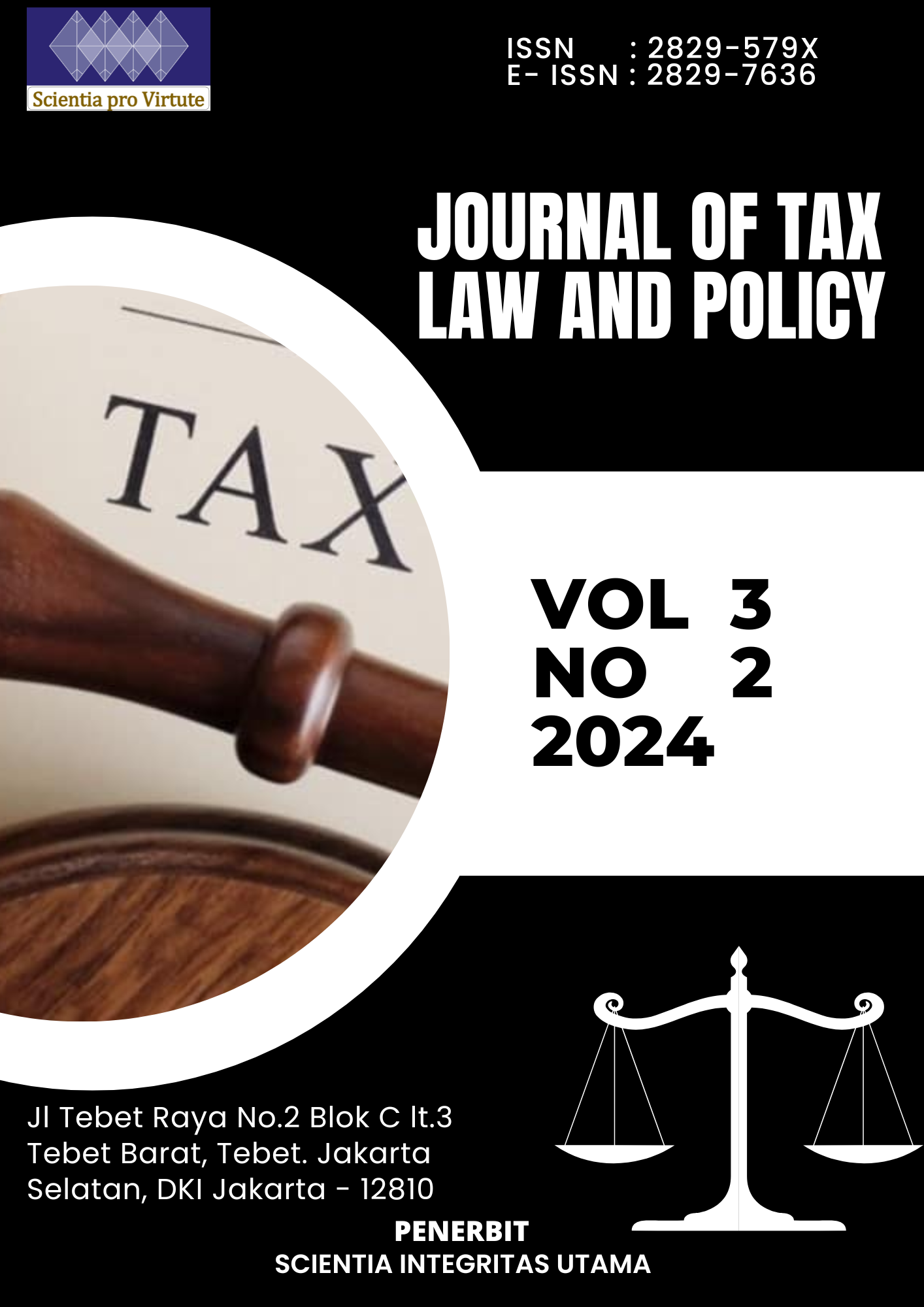Effect of VAT C-Efficiency Ratio, VAT Buoyancy, and VAT Elasticity on Value Added Tax (VAT) Revenue Ratio in Indonesia
DOI:
https://doi.org/10.56282/jtlp.v3i2.515Keywords:
value added tax, c-efficiency ratio, buoyancy, tax elasticity, value added tax revenue ratioAbstract
Value Added Tax (VAT) is one of the mainstays of tax revenue that many jurisdictions, including Indonesia, can rely on in the future given the tendency in the digital era for competition to reduce corporate income tax rates in many countries and modern society faces challenges to deal with tax avoidance. Given the lack of research on VAT performance from 1984-2022, it is necessary to analyze and determine the influence of VAT C-Efficiency Ratio, VAT Buoyancy, and VAT Elasticity on VRR in Indonesia. Based on the Structural Equation Model (SEM) method, it is concluded that VAT C-efficiency has a positive and significant effect on VRR, VAT Buoyancy has a negative and insignificant effect on VRR, and VAT Elasticity has a negative and significant effect on VRR. While simultaneously, VAT C-efficiency, VAT Buoyancy, and VAT Elasticity greatly influence VRR. It is recommended that VRR be improved by increasing VAT C-efficiency.
Downloads
Downloads
Published
How to Cite
Issue
Section
License
Copyright (c) 2024 Journal of Tax Law and Policy

This work is licensed under a Creative Commons Attribution-NonCommercial-ShareAlike 4.0 International License.








